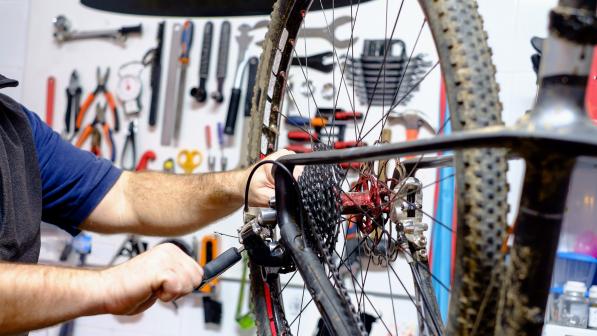How do you measure gears on a bike?

Highs and lows
A low gear is one that enables you to cycle slowly – e.g. uphill – while pedalling at an easy cadence. A high gear is one that enables you to cycle quickly – e.g. downhill – while pedalling at an easy cadence.
The first pedal cycles had the cranks fixed to the front wheel. The distance travelled for each revolution of the cranks was solely determined by the size of the wheel. That’s why penny farthings arose. A bigger wheel went further, so was faster for a given cadence. Wheel size was gear size. A pennyfarthing with a 52in wheel had a 52in gear.
On chain-driven bikes, wheel size is a factor but you can travel more or less distance per crank revolution by altering the size of the chainring fixed to the cranks and/or the sprocket fixed to the rear wheel. If the chainring is twice the size of the rear sprocket, the rear wheel turns twice for each crank revolution. Such a bike with 26in wheels would travel the same distance per crank revolution as a 52in penny-farthing: 2×26in = 52in.
Calculating gear inches
It's a bit tricky to explain so we liked the simplicity of this representation of calculating gear inches on Bikepacking.com so have redrawn it.

Number crunching
There are three ways to measure gears. The simplest is the ratio between the chainring and rear sprocket: divide the number of teeth on the chainring by the number on the sprocket.
Let’s say the chainring has 48 teeth, the sprocket 16. That’s 3:1. For each crank revolution, the wheel turns three times.
This measurement only works for a given wheel size.
Gear inches describe the effective diameter of the wheel, telling you how big an equivalent penny-farthing wheel would be!
Divide the chainring size by the sprocket size, as above, then multiply by the bike's wheel diameter.
If the wheel diameter is 26.69in (a typical 700×28C setup), our 48/16 geared bike would have a gear of 80in (to the nearest inch).
Gear development tells you how far the bike travels in a given gear for each revolution of the cranks. It's the effective circumference of the wheel in each gear.
To find this: divide the number of teeth on the chainring by the number of teeth on the sprocket; multiply by the wheel diameter (as with gear inches); then multiply this figure by pi (3.14) and convert to metric.
That’s 6.39 metres for the 700×28C bike with 48/16 gearing, above.
By calculating each gear ratio, you can plot the overall range – that is, bottom gear to top gear – and also how big the steps are between gears and whether different chainring/sprocket combinations overlap.












